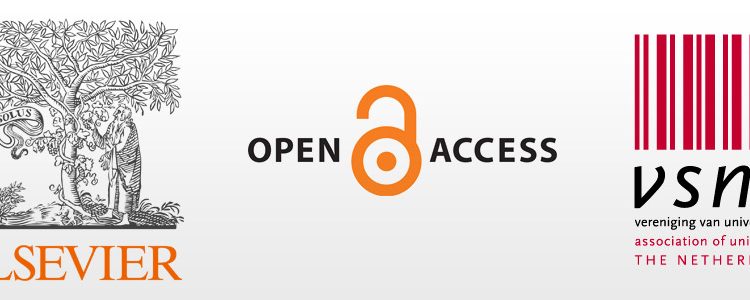Is Elsevier Committed to Open Access?

The Dutch state secretary of education, Sander Dekker, wants all publications from Dutch scientists to be available under Gold Open Access by 2024. This would require that the publication charges levied against the author completely covers all costs. It would also mean that no member of the public would have to pay subscription fees to access the data. Dutch institutions have formed a consortium to negotiate with academic publishers about an open access policy. There was some difficulty in arriving at an agreement with Elsevier publishing, leading to the Association of Universities in the Netherlands outlining a multi-stage Elsevier boycott to encourage the publishing house to bring Elsevier journals closer to the gold open access policy envisioned by Dekker.
In the first stage, all Dutch scientists who are editors of an Elsevier journal would be asked to resign. If this resulted in no change of Elsevier’s stance on open access publishing, Dutch researchers would be asked to stop acting as reviewers for Elsevier journals. As a last resort, Dutch scientists would be asked to stop publishing their work in Elsevier journals. At the end of 2014, the negotiating consortium and Elsevier were locked in a stalemate and the roll out of this multi-stage boycott seemed inevitable. However, Elsevier and the consortium arrived at a proposed contract a year later.
The Contract Between Elsevier and the Dutch Institutions
The Dutch universities are clearly pushing for a gold open access policy but there are those who suggest that Elsevier may be trying to sabotage open access. They base this accusation on the proposed contract between Elsevier and the Dutch universities. The proposal in its current format would give all the Dutch universities the ability to publish 3,600 open access articles in Elsevier journals over the course of three years. However, there are some restrictions. According to the open access paragraph of the agreement, only articles where the corresponding author is affiliated with a Dutch institution would qualify for open access publication. This means that publications originating from Dutch universities where the corresponding author is not of Dutch origin would not benefit from the open access deal. Additionally, only a small number of Elsevier journals would be part of this open access arrangement and Elsevier has chosen to include its lesser known titles in this agreement such as Clinical Genitourinary Cancer, The International Journal of Coal Geology, and Ticks and Tick-borne Diseases. Elsevier’s most prominent journals, such as Cell, The Lancet, and Journal of Financial Economics, are excluded from the deal.
On the financial side, the subscription costs to the Dutch institutions will be increased by 2.5% in 2017 and 2.0% in 2018. Elsevier describes this proposal as a three-year open access pilot program. In each consecutive year, 133 more Elsevier journals will be added to the list of journals where researchers affiliated with Dutch institutions may publish their work in an open access format. This will mean that, in 2018, about 1 in 5 Elsevier journals will be part of this open access agreement with the Dutch universities. The open access paragraph of the proposed contract between Elsevier and the Dutch universities, therefore, doesn’t seem to be very supportive of the gold open access ideals of the Dutch institutions or government. The proposal raised subscription costs while limiting who can publish under an open access license and excluded most Elsevier journals from this arrangement.
Open Access Model
Part of the reason there has been a demand from researchers for an open access policy is the fact that they feel the current system is broken. Professor Jan Blommaert described the current publication system as completely absurd for two reasons. First, there are the high subscription costs. Second, journals wield a lot of power over what they choose to publish. They also tend to favor the work of more established names in a field, which means that good work done by a young researcher may take a much longer time to be published than a less important article by an established scientist.
Of course, under the current subscription business model, journals earn significant profits from article processing charges levied against authors who must frequently waive the copyright to their work, institutional and personal journal subscriptions, and charges levied against members of the public to access individual articles of interest. The switch to open access would mean that there would be a single revenue stream. The proposed contract between Elsevier and the Dutch universities represents minimal effort from Elsevier as opposed to enthusiastically embracing an opportunity to switch to an open access model with authors from a single country. This kind of approach only serves as further evidence for those who maintain that the publishers’ main aim is to make a profit and not freely disseminate information, therefore, major publishing houses cannot be part of the open access solution.









